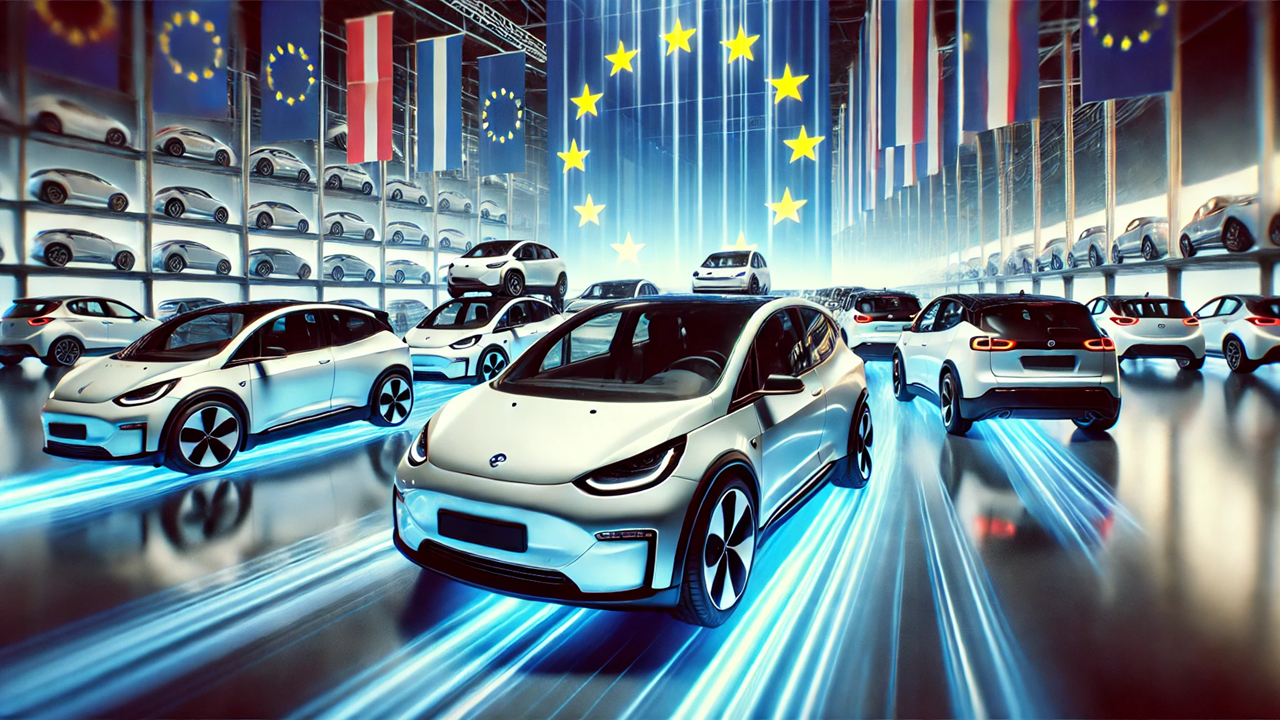Electric Showdown: How the EU is Using Trade Policies to Curb China's EV Dominance
The ongoing trade tensions between the European Union and China over battery electric vehicles (BEVs) highlight the complex relationship between tariffs and non-tariff measures (NTMs). A recent report titled "Trade Policies Mix and Match, Theory, Evidence and the EU-Sino Electric Vehicle Disputes" by Hiau Looi Kee and Enze Xie, published by the World Bank, sheds light on how governments leverage these trade tools to protect their economies and address externalities like environmental impact. The EU's use of NTMs, alongside tariffs, in its BEV dispute with China showcases how modern trade policies are evolving to balance economic and environmental interests.

EU-China Electric Vehicle Tensions: Balancing Trade and Environmental Concerns
In recent years, electric vehicles (EVs) have taken center stage as nations race toward a greener future. Yet, the rapid expansion of this market has sparked a complex trade dispute between the European Union (EU) and China, focusing on battery electric vehicles (BEVs). This dispute brings attention to the intricate relationship between tariffs and non-tariff measures (NTMs) as governments attempt to protect both their economies and the environment. A new research report titled "Trade Policies Mix and Match, Theory, Evidence and the EU-Sino Electric Vehicle Disputes" by Hiau Looi Kee and Enze Xie delves, published by the World Bank, into the dynamics of these trade tools, offers insights into how they are employed in this ongoing conflict.
The Complex World of Tariffs and NTMs
Tariffs have long been a straightforward trade policy tool used by governments to protect domestic industries. A tariff is a tax added to imported products, which raises their price and makes them less appealing to buyers. However, with globalization reshaping trade practices, governments are increasingly resorting to NTMs, which include measures like product standards, quotas, and countervailing duties (CVDs). These policies, while not direct taxes, still affect trade flows and are often used to regulate product quality, public health, or environmental impact.
The report suggests that tariffs and NTMs act as substitutes in many cases. For example, countries with lower tariffs often impose stricter NTMs to achieve the same protectionist goals. However, the extent to which these tools are substituted depends on factors such as the importing country’s income level, trade agreements in place, and the type of goods being traded. Consumption products and agricultural goods, which often have significant environmental or health externalities, tend to see more frequent and stricter NTMs.
The EU's Response to China’s BEVs
The EU-China dispute over BEVs began when the EU imposed a series of provisional countervailing duties (CVDs) on Chinese electric vehicles in July 2024, claiming that Chinese BEV manufacturers had benefited from unfair state subsidies. These CVDs were added on top of an existing 10% tariff, aimed at countering what the EU saw as market distortion caused by China’s state-supported EV sector.
China, in response, filed a formal complaint with the World Trade Organization (WTO), arguing that the EU’s measures were protectionist and unfair. The situation escalated when the EU adjusted its duties, imposing rates of up to 36.3% on Chinese manufacturers like SAIC and BYD. The EU’s rationale for these measures was not only to protect its nascent electric vehicle industry but also to address the potential environmental impact of flooding the market with cheaper, foreign-produced BEVs.
The report explains that, in cases like these, the combination of tariffs and NTMs is not just about protecting domestic markets but also about addressing consumption externalities—side effects that can affect society at large, such as congestion or environmental degradation. In this context, the EU's actions can be seen as a way to balance protecting its economy and promoting sustainability by discouraging imports of heavily subsidized vehicles that may harm its domestic BEV industry.
Policy Implications and Lessons
The EU-China BEV dispute underscores the importance of using a mix of trade policies to address both economic and environmental goals. The report’s model reveals that, in many cases, governments use NTMs to complement tariffs when they need to address broader societal issues like environmental protection. In the case of BEVs, the EU’s imposition of countervailing duties is part of a broader strategy to ensure that the growth of its EV market aligns with environmental goals and does not overwhelm domestic manufacturers.
This trade conflict highlights the evolving nature of global trade policy, where decisions are no longer based solely on protecting domestic producers but also on ensuring sustainable development. As the global push for electric vehicles accelerates, other countries may also adopt similar strategies, using NTMs to regulate not just economic competition but also environmental impacts.
As Kee and Xie’s report demonstrates, modern trade disputes are increasingly complex, with countries needing to navigate multiple, sometimes conflicting, objectives. For policymakers, the key takeaway is that trade policies must be flexible enough to adapt to the changing landscape of global trade, where environmental considerations and international regulations play as significant a role as economic protectionism.
- FIRST PUBLISHED IN:
- Devdiscourse
ALSO READ
Telecom Tariffs and Levies: A Balancing Act for Growth
Mexico's New Tariffs: Impacting Asian Goods and Online Retail Giants
TVS Motor Achieves Robust Growth with Expansion in Electric Vehicles and Exports
Tariffs Take Center Stage at CES Amid Auto-Tech Innovations
Canada Eyes Retaliatory Tariffs Amid Threats from Trump










